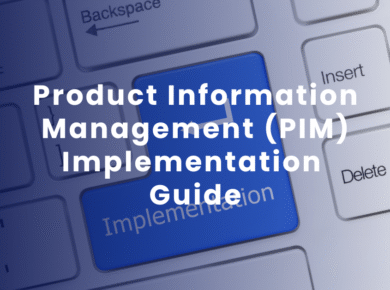How Will GenAI Redefine the Hybrid Shopper Experience? Read Blog Holiday shopping
Why MDM Implementation Style Matters?
In today’s data-driven enterprises, information flows through a complex web of systems, platforms, and departments. Without control and coordination, this data can become fragmented, duplicated, or out of sync—resulting in costly inefficiencies and inconsistent customer experiences. This is where Master Data Management (MDM) steps in.
MDM is the strategic process of managing, governing, and distributing the most critical data assets of an organization—such as customer profiles, product catalogs, suppliers, or locations—ensuring that every part of the business operates from a single, trusted version of the truth. But implementing MDM isn’t a one-size-fits-all journey. Different businesses have different operational needs, technical maturity, and data challenges. As a result, there are several implementation styles of MDM to choose from.
Below is a comprehensive guide that explains the four most common MDM implementation styles, identifies which types of businesses they’re best suited for, and outlines the benefits each style offers.
MDM Implementation Styles: Comparison Table
| Implementation Style | What It Is | Best Suited For | Key Benefits |
|---|---|---|---|
| Consolidation Style | This style aggregates master data from multiple operational systems into a centralized repository for analytics, governance, and reporting purposes. While it consolidates the data for unified analysis, it does not distribute updates back to the source systems, preserving the integrity of operational processes. | Ideal for organizations looking to gain deeper insights from fragmented data sources without making changes to existing operational workflows. Best suited for companies starting their MDM journey and focused primarily on enhancing reporting and business intelligence. | • Faster time to value • Enhances enterprise-wide visibility • Minimal impact on existing systems • Useful for early MDM adoption |
| Registry Style | This style creates a master data index by referencing records across multiple systems without physically moving them. Using advanced matching and linking techniques, it connects records from distributed systems to form a unified view while preserving data ownership and autonomy at the source level. | A great fit for highly regulated industries, such as finance and healthcare, where data sensitivity and control are paramount. It works well for organizations that need to maintain local data ownership while still benefiting from a consolidated view for compliance and reporting. | • Lightweight and fast to implement • Maintains data ownership locally • Enables compliance with data policies • Minimal disruption to source systems |
| Coexistence Style | In this hybrid approach, both the MDM hub and source systems can create and modify master data. Changes are synchronized across systems through bidirectional flows, ensuring all platforms stay updated while maintaining operational flexibility and consistency. | Best suited for organizations undergoing digital transformation that still rely on legacy systems. It allows modernization at a manageable pace, giving teams the flexibility to maintain workflows in familiar systems while embracing centralized governance practices. | • Balances legacy and modern systems • Promotes collaboration between platforms • Enables gradual MDM adoption • Supports scalable governance |
| Centralized Style | This is a highly governed model where all master data is created, maintained, and distributed from a single centralized MDM hub. The hub acts as the only authoritative source, pushing validated records to connected systems in real time to ensure global consistency and integrity. | Ideal for large enterprises with mature IT infrastructure and strong data governance requirements. Best for businesses that require strict control over data quality, standardization across global operations, and seamless synchronization across systems. | • Highest level of data control • Ensures uniformity across business units • Real-time updates to systems • Enables full data lifecycle governance |
How to Choose the Right MDM Style for Your Business?
- Startups or growing businesses looking to improve reporting quickly without major system changes should consider the Consolidation style.
- Highly regulated industries like healthcare or banking may benefit from the Registry style, where data sovereignty and control are essential.
- Organizations in digital transition that still rely on legacy platforms may find the Coexistence style most suitable, as it balances new and old systems.
- Enterprises with global footprints and a need for absolute consistency should adopt the Centralized style, which offers the highest level of data governance.
Final Thoughts
Each Master Data Management implementation style serves a unique purpose and brings different strengths to the table. The right approach depends on your organization’s size, technical landscape, regulatory environment, and strategic goals. Whether you’re starting with a lightweight registry model or embracing a fully centralized system, the key is to align your MDM journey with both short-term needs and long-term growth.
At Innowinds, we help organizations evaluate, design, and implement MDM solutions that are not only technically sound but also business-aligned. Our team works closely with clients to identify the best-fit implementation style and ensure a seamless path to trusted, governed, and business-ready data.
Connect with our experts to learn which master data management (MDM) implementation style is best suited for your business needs.
Latest Resources
How Unified Data Can Keep You Ahead This Holiday Read Blog As
Enterprise Data Management in Transition: 2026 Trends and AI-Driven Shifts Read Blog
Unlocking Growth: Why PIM DAM Integration Is a Strategic Imperative Read Blog
Mastering Product Data Syndication: A Business-Centric Approach Read Blog Why Accurate Product
The Hidden Costs of Missing Metadata in Digital Asset Management Read Blog
Key Takeaways: Identify the Right Time for PIM: Gain clarity on identifying
PIM vs MDM: What’s the Difference and When to Use Each? Read
Questions to Ask When Choosing a PIM Vendor? - Part 2 Read
Questions to Ask When Choosing a PIM Vendor? - Part 1 Read









